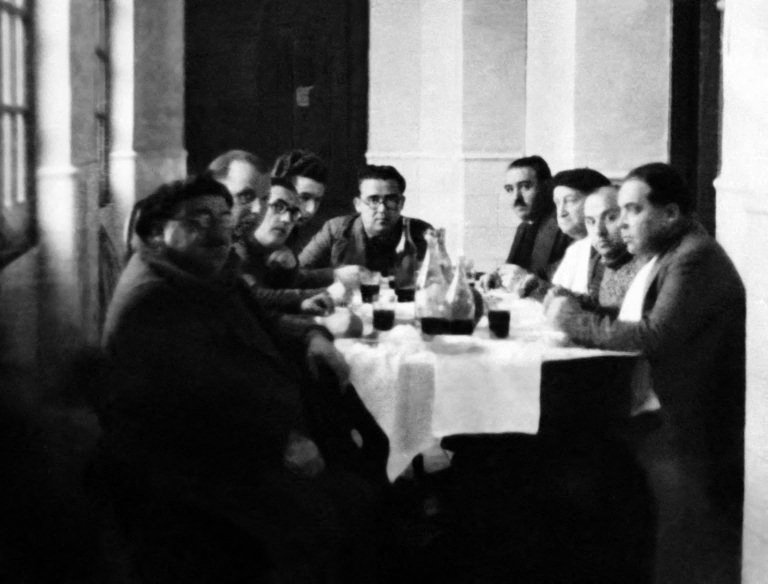What are the origins of Spain's tapas food culture?

Tapas are an intrinsic part of Spanish eating culture, consisting of small plates of food shared with friends or family along with drinks. There are some fascinating theories about how this typically Spanish way of dining came to be.
Spain's royal academy of language (RAE) defines tapa as "a small portion of food served as an accompaniment to a drink”.
It’s important to note though, that although the concept of tapas dates back many years in Spain, the word itself does not, according to the academy. The first definition in their dictionary only dates back to 1939.
Back then it wasn’t used all over the country either; it was considered to be Andalusian term. It wasn't until 1970 that it began to be used throughout Spain.
READ ALSO: 11 food and drink experiences in Spain to remember
Of course the word tapa also means lid in Spanish. In fact, one of the main theories as to the origin of these small bites has to do with the fact that they acted as lids on top of wine and beer glasses.
The story goes that back to the time of King Philip II in the mid 1500s during the construction of the Monastery of El Escorial. According to legend, the tavern keepers who served drinks to the monarch covered the jugs of wine with a thick slice of jamón Serrano (ham) to prevent dust, dirt and insects falling inside.

Another similar theory is that when Catholic Monarchs Ferdinand and Isabella took a trip to Cádiz, they stopped at a tavern that was crawling with flies. The king asked the innkeeper to cover his glass of wine with a slice of something. The innkeeper then placed a piece of cheese he had on top of their glasses to stop the flies from going in saying "here's your tapa, your majesty”.
READ ALSO: Where can you get free tapas in Spain?
Yet another hypothesis which also has a royal connection is to do with Alfonso X the Wise (1252 – 1284) who began asking for his wine accompanied by small snacks to counteract the effects of alcohol due to an illness he had. So, he ordered that all Castilian inns should only serve alcohol along with a small portion of food.
Apparently, this was also in a bid to prevent his subjects from getting too drunk at lunchtime so that they could continue working in the afternoons. This also fits in with another historical theory which says that innkeepers were forced to serve their drinks with a plate of food placed on top so as cart drivers didn’t leave so inebriated and have so many accidents. It is said they had to finish their food first before removing the lid to drink the wine or beer.

Other versions suggest the origin could lie in the private clubs of Seville, where the wealthy would order drinks from the surrounding colmados (grocery stores), and then bring them in their corresponding glasses covered with slices of ham, pork loin, or cheese in order to keep the dust out. Again, this fits in with the lid theory.
El Esmorzaret: What is Valencia’s sacred snack tradition?
However, in his book The Aperitif Ritual: Avisillos, Siluetas y Tapas (1998), historian Néstor Luján explains that the idea of tapas was originally born as a result of the food shortages during the Spanish Civil War. He says that eating small bites between meals was in order to try and stave off hunger.
Whichever version of the story you believe it’s clear that tapas are almost always accompanied by a drink. Whether they were originally used as a lid, a way of preventing drunkenness or as a result of rationing, it’s clear that tapas are an intrinsic part of Spanish gastronomy and eating culture.
Tapas are known and loved throughout the world and they're a big part of both the social lives of the Spaniards and foreigners that live here, as well as being a foody experience you want to have as a tourist.
Furthermore, el tapeo (tapas eating) largely explains Spanish drinking culture. Spaniards rarely drink without nibbling on something at the same time, lining their stomachs and in the process not getting as drunk as people in other European countries.
Please, login for more
thelocal




